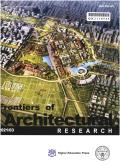Aesthetic evaluations, including beauty and attractiveness, have an important role in our lives. Despite its importance in our every-day life, enough attention has not been devoted to the assessment of place attractiveness in previous studies. We assume that changes in elements of square attractiveness are associated with changes in brain functional connectivity patterns. In this study, we have tried to explore the relationship between elements of square attractiveness and individuals' emotional perception as well as the brain mechanism involved in the process of cognitive development. There has been a focus on using objective measures of physiological rather than using self-reported data of an individual's emotions because people cannot understand their emotions properly and it is needed to compare self-report emotions with physiological processes. Classification of the five main elements of attractiveness was performed using the Delphi technique. Subsequently, twenty-four healthy young adults were exposed to the visual stimuli consists of five elements. A 32-channel EEG system was used to record the brain activities of participants while watching the stimuli. The subjects' feelings about valence and arousal levels of the elements were evaluated using the Self-Assessment Manikin (SAM) technique. The findings showed that “visual openness” is the most important element to increase the square attractiveness of everyday landscape in residential areas. The analysis revealed a significant difference (p = 0.048) in arousal ratings between more attractive (more openness) (M = 4.77) and less attractive (less openness) (M = 4.52). Attractiveness elements of the stimuli have a region-specific association with brain functional connectivity networks. This pattern is mainly found in the functional connections between central parts of the brain.


